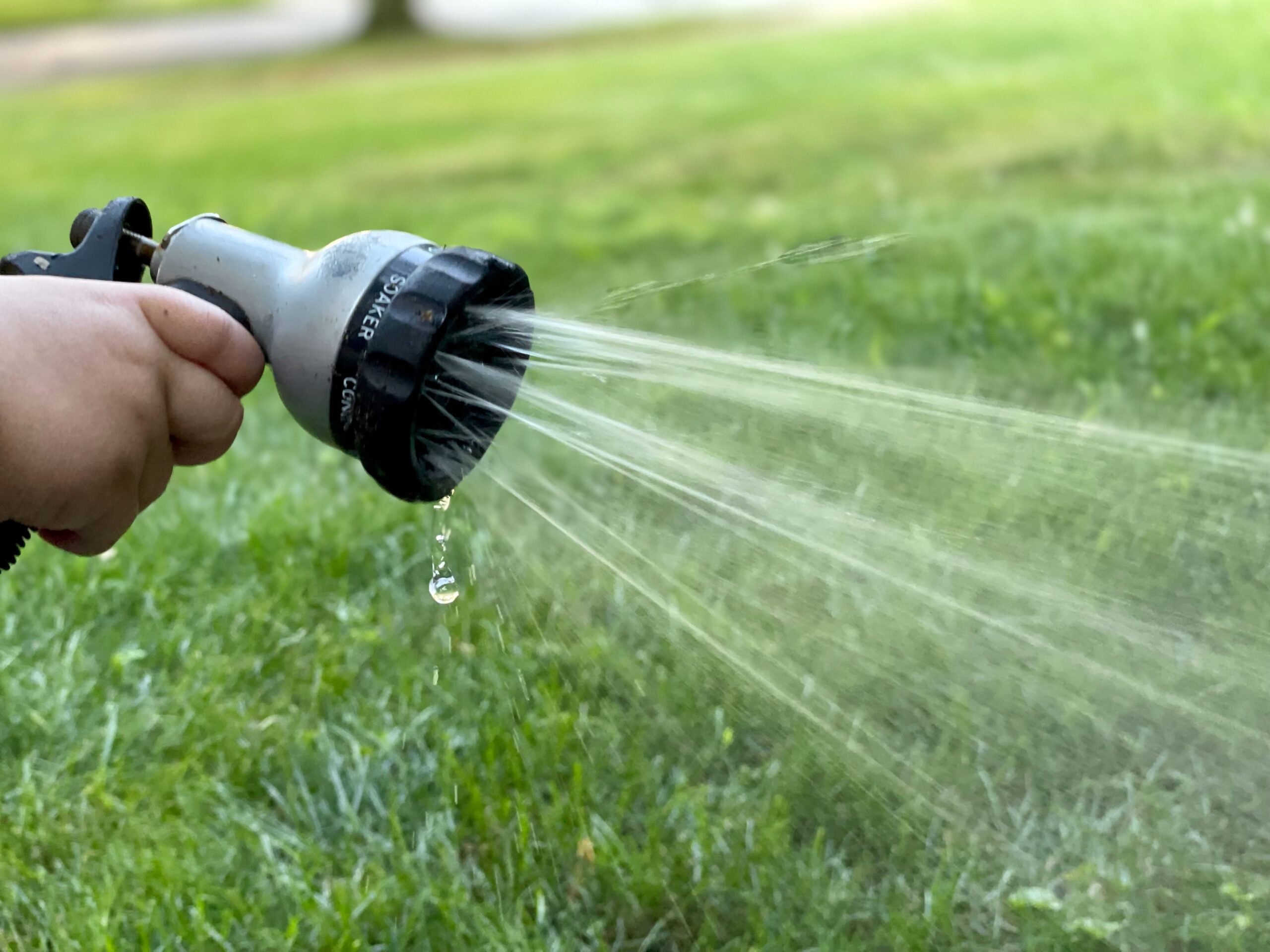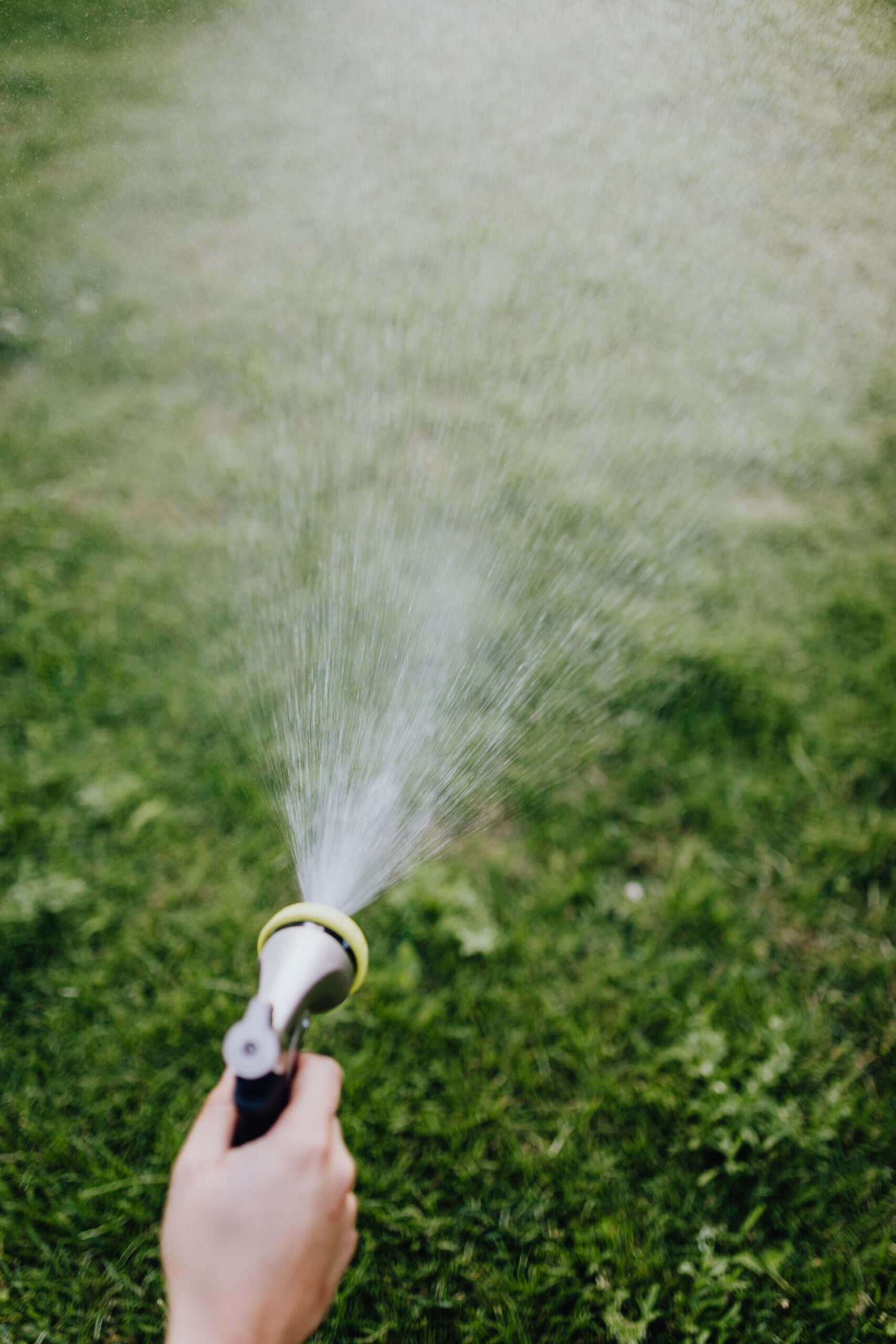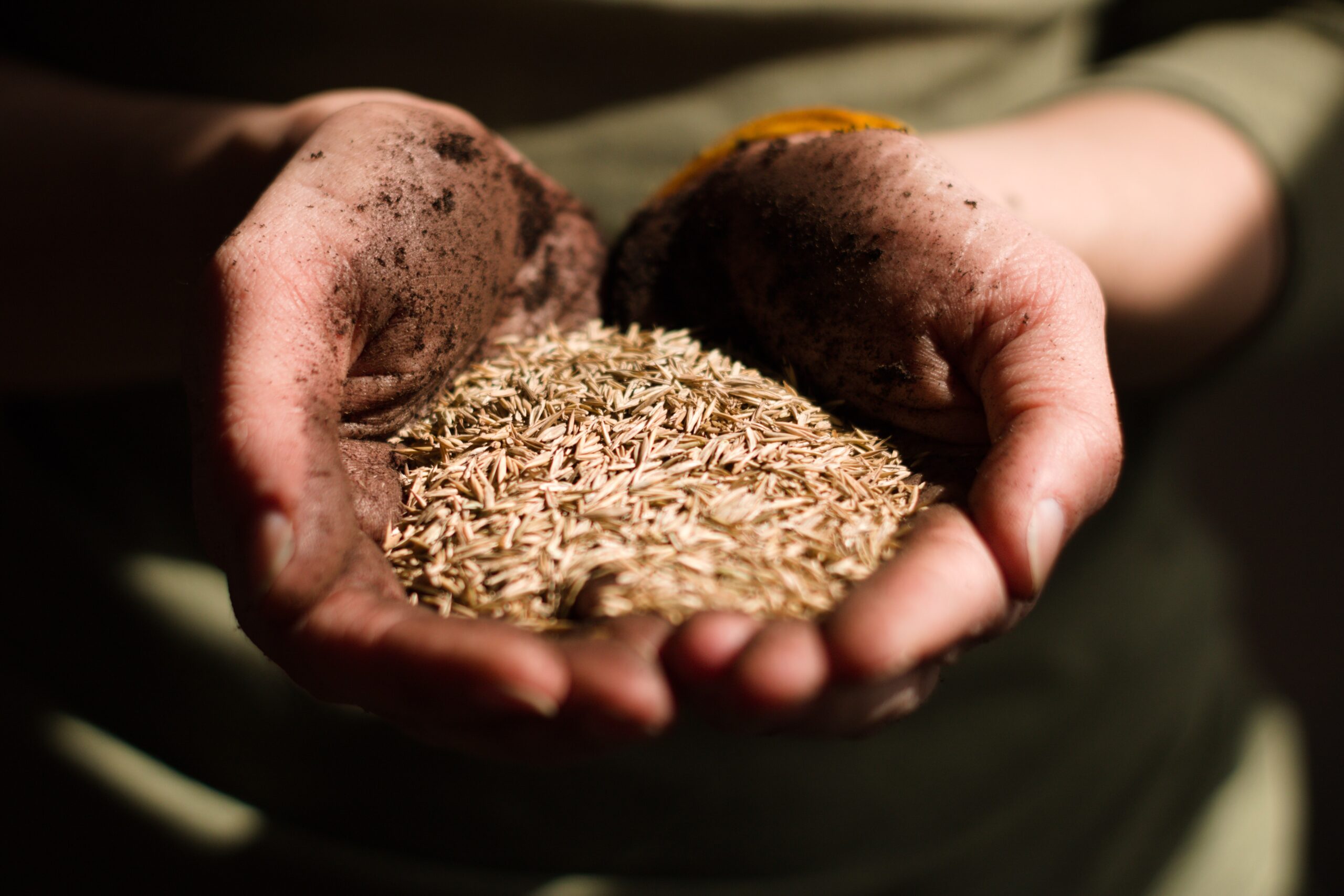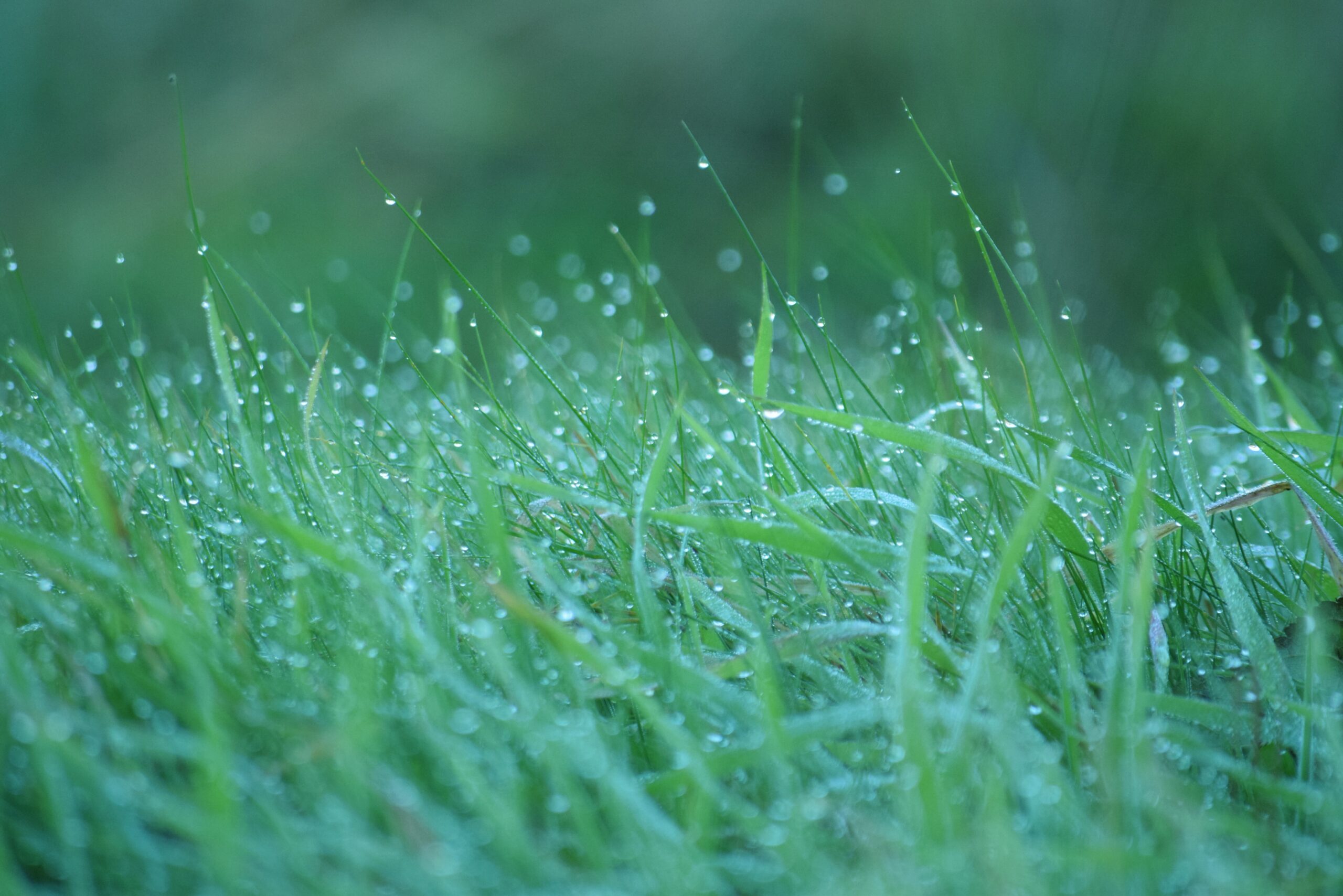Many homeowners aspire to have a lovely, luscious green lawn, but maintaining one can occasionally be a major hassle, particularly if you are cultivating grasses from seeds. It’s understandable why growing grass seems like a difficult task—birds may consider your new grass seeds to be a tasty snack, and there may even be occasional brown patches wherein your seeds do not seem to develop and grow!

How frequently and how much water needed to water grass seed is a common problem that people run into. Different species of grass seed might present different difficulties. Lack of water can cause seeds to become dormant or be eaten by birds or rats, while an excessive amount of water might drown or wash the seeds away.
RELATED: Top Reasons Why Your Grass Seeds Are Not Growing (and What To Do About It)
Here’s how to provide your own grass seeds with everything they require.
What Specific Factors Affect the Timing of Watering?
There are certain apparent external factors to take into account when planning your watering schedule for your new grass seed. For example, you should give more water regularly when the weather is dry outside than when it’s raining.
Unbelievably, the wind must also be taken into account. If your soil is damp, the grass seeds might sink deeper into the ground, providing them a bit of protection to be still in place.
Conversely, if the weather is windy and dry, your seeds are much more likely to be blown away. Think of slightly damping your soil or erecting wind break temporarily, if you know it will be a windy and dry week.
In addition, grass seeds, oftentimes, are the same, despite the fact that different grass kinds require varied quantities of water after they are completely grown. The only real distinction between cultivars in terms of watering requirements is how fast they grow. It requires less watering after it is roughly one inch tall than grass seedlings do.
Therefore, faster-growing seeds will require lesser water than your slow-growing grass seeds for germination and growth.
RELATED: How To Plant Grass Seeds On Hard Dirt For Best Results? A Simple & Easy Guide
What Watering Schedule is Ideal? (Watering Grass Seeds)
Finding the ideal level of watering is essential because it can be harmful to submerge and overwater your grass seeds. Here is what you can do to find the ideal watering schedule:

Step 1: Every day, except on rainy days, give water to your grass seeds.
Overwatering results from watering new grass seed immediately right after or before a storm, so avoid it at all costs. Avoid too much moisture on your grass seeds.
Step 2: Don’t water your seeds at the peak of the day, but before dusk.
When you water new grass seed, allow your soil to have a substantial amount of time to dry before the sunset because wet soil can result in fungal infections.
Step 3: Continue to frequently but sparingly water the seeds.
Your growing soil should slightly be damp, but not drenched, in the top 2 inches.The rule is to keep your soil moist but not soaked. Depending on the moisture present in the soil, this usually requires five to ten minutes of watering to accomplish.
Step 4: Determine the amount of water your garden lawn requires.
You can do this by calculating the amount of water required to bring moisture to a square foot of land, then multiplying this number by the entire square of your garden lawn.
Step 5: Make sure to angle the water hose.
The water should be flowing from above the grass seeds because if it is sprayed directly on the seeds, it may wash the seeds away.
You can use an attachment spray for this. However, you can simply get the same result by covering a portion of the orifice with your thumb.
Does your lawn need to be damp or dry when you seed it? (Watering Grass Seeds)
When the dirt is moist, plant your seeds. This gives the seeds a boost and signals them that it’s time to start growing. However, your seeds are vulnerable to birds, wind, or going into dormancy if you scatter them over dry soil.
RELATED: Will Grass Seed Grow If Not Covered With Soil? Sowing Seeds For A Perfect Lawn

Furthermore, roots can more easily penetrate moist soil compared to dry soil, which can be compact and much harder. Therefore, the best way to get your soil ready is as follows:
Step 1: Thoroughly soak your existing lawn for a few days prior to planning to seed it. You can use a sprinkler system. There are many cheap lawn sprinkler available in the market nowadays.
Step 2: Ensure that your soil is moist in the top 5-6 inches.
This will help to aerate the garden soil and provide the developing grass seeds with a plentiful supply of water. Seeds should start to begin germination as soon as they are placed in moist, loose soil.
Which grass types use the least amount of water? (Watering Grass Seeds)
Grass seeds all need about a similar water amount to reach a height of 2 inches. You can change to a mature grass watering routine once they reach the desired height. Compared to seeds, fully established grass only need one inch or two inches of water per week.
You can go in one of two directions from here:
Fast-growing Grasses
Grasses that spread rapidly, include the tall fescue and ryegrass. Fast-growing grass plants will use less water because it will be in the moisture-loving seed stage for a shorter period of time.
Slow-growing Grasses
Buffalo grass, Bermuda grass, St. Augustine, and Fescue grasses are examples of drought-tolerant grasses. Less water will be used overall by drought-tolerant grass.
Tall fescue, which appears on both of these lists, is probably your best option for general conservation of water.
How much time will it take for the grass to grow? (Watering Grass Seeds)
Make sure to conduct your study, so you know what to expect because the answer completely depends on the grass type that was planted and the temperature zone where you are situated.
Having stated that, the growth of grass seed might normally take few days up to one month. So you can start to mow your healthy lawn after three to four weeks. Just clear up your lawn from the soft sinking soil leaves before you mow to avoid the mess.
How to Properly Water Grass in a Dry Spell (Watering Grass Seeds)
Utilizing fresh water on your garden lawn planting when there is a water advisory in effect in your area is not recommended. However, if you don’t want to create a drought-resistant lawn, there are fortunately several fantastic choices to keep your lawn thriving without adding to water shortages. What you should do is:
Step 1: Before a drought develops, gather water in a rain barrel.
Even though there won’t be any rainfall during the onslaught of drought, if you prepared out well beforehand, you can still collect water all year long and be ready in case there is ever an occurrence of water shortage.
Step 2: Reutilize water from previous activities.
The best water for watering your grass is the one that was utilized for cooking, particularly water that was already boiled. Simply avoid using it when it’s still warm.
On the other hand, using the water that was used for cleaning or bathing strictly depends on the kind of cleaning agents or soaps that were added. Therefore, it is best to avoid using soaps on your garden lawn if you are unsure whether they are safe to add to the soil.
Things To Consider Before Watering Grass Seeds
Before they start to germinate, all seeds need moisture and a specified temperature range. The seed or fresh sprout is susceptible once the germination process has started and may perish if the environment changes.

The seed or sprout perishes if it becomes dry. Thus, your goal is to always supply enough moisture. The most crucial time is before any grass sprouts begin to emerge. Depending on the kind, development of grass seed ranges anywhere between 5 and 30 days to germinate; in colder climates, the duration may even be longer.
The roots are also spreading out into the soil as soon as the new grass starts to appear. This occurs quite quickly. The plant is no longer as sensitive because the roots have more access to subsurface soil moisture.
Don’t, however, stop watering fresh grass seeds just yet. Keep in mind that seeds do not all sprout at once. Different seeds will be buried at various depths, absorb water in various ways, or have different qualities or maturities. In addition, many seed mixtures are combinations of several types, each of which will influence the growth of the mixture in a particular way.
The proportion of seeds that germinate can be raised.
Improving Grass Seed Growth
- To absorb moisture, place the seed in direct contact with the soil.
After planting, carefully rake the seed to incorporate it into the soil, and/or lightly roll it over to further ingrain it. Find out more information at Sowing Grass Seed. Seeds that get hooked on grass or weeds already there are destined to fail.
- Mulch can aid in moisture retention.
Only a very thin layer, between 1/8″ and 14″, is needed. To prevent clumps that bury the seed, seed coverings or compost should be finely screened. Although it stinks, steer excrement is cheap. If it is weed-free certified, only use it. For big areas, bedding straw is a suitable choice, but avoid using hay with seeds.
- If at all feasible, sow grass seed at the ideal moment.
Warmer temperatures will not benefit cool-season grasses as much. Warm-season grasses will struggle in colder climates. Visit The Best Time To Plant Grass Seed to look into your possibilities.
- Avoid problems from above.
Birds enjoy eating bare seed. Make every effort to stop them. Limit child and animal activities that might interfere with grass seed germination.
- Wait for a substantial amount of time when pesticides are used.
When pesticides like weed killers, fungicides, or pre-emergents have been sprayed on the grass area, wait the necessary amount of time before sowing. The waiting period should be stated on product labels.
It’s crucial to water frequently, lightly, and consistently. Do not overwater, and of course, do not underwater.
Grass Requirements To Consider
Humidity
Throughout the procedure, adequate moisture must be present. If it’s not enough, the seed can dry out. Contrastingly, the seed can also rot if there is too much dampness.
Temperature
The right range of soil temperatures should be present for each type of grass. An ideal temperature range for cool season grass is 45 to 55 degrees. Warm season grass needs temperatures between 55 and 65 degrees.
Remember that temperatures in the soil are typically lower than those in the air. This is because, along with the ground’s density, which makes it take longer for it to warm up, moisture escaping from the surface also has a cooling impact.
In loose garden soil, a soil thermometer (or any other kind of soil analyzer) should easily penetrate. Use a screwdriver or some time with the poker to make a beginning hole in compacted soil since it is not intended to be forced in. On the other hand, you want to have complete touch with the dirt, so don’t make the hole too big.
Air/Oxygen
When the sprout emerges from the seed, it needs oxygen to continue growing. When soil is overly wet, oxygen cannot exist, preventing the sprout from growing. This issue can also be caused by compacted soil.
Light Conditions
A seed’s capacity for growth while subterranean is constrained. For photosynthesis to take place and provide food for the plant, the sprout needs to burst through the surface. If seeds are buried too deeply, they won’t be able to sprout.
Final Thoughts
You have everything you need for a successful seeding, whether you’re trying to fill in a few bald spots or start a brand-new grass from scratch. Always keep in mind that your soil should be moist but not muddy and to be careful not to wash them away.
If you want to use less water, pick a grass kind that grows more quickly. During a drought, you can also water your newly seede lawn using previously used water that hasn’t been tainted with chemicals. Anyone can develop a beautiful, lush lawn by following these easy instructions, and it will be sure to wow.
We hope you learned something from this article, here are other articles that you can learn from:
When And How To Fertilize Your Vegetable Garden For The Best Results?
Buffalo Grass 101: Is It Any Good & How Can You Grow It In Your Yard?
What Is The Best Time To Plant St. Augustine Grass? The Ultimate Guide







